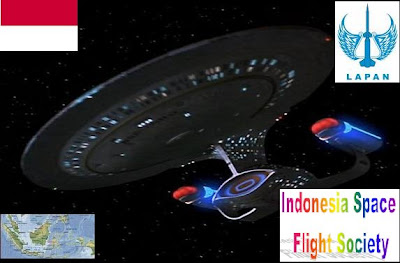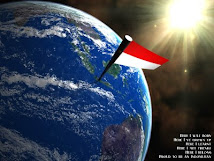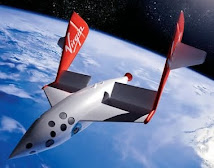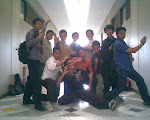(IS2TS Indonesian Space Sciences & Technology School)
Vision
"Experiments In The Cosmos, Because Our Laboratory is Universe"
Mission
1. Menjadi Sekolah Sains Teknologi Cyber Keantariksaan dan Kedirgantaraan Terdepan di Indonesia
2. Melahirkan Generasi Impian yang Selalu Bertafakur, Bertadabur dan Bertasayakur terhadap Keseimbangan Semesta yang Telah Tercipta
Program IS2TS: 1 Tahun Mendatang.

1. Penelitian Pendaratan Manusia ke Bulan
2. Penelitian Aerospace Engineering (List of aerospace engineering topics)
3. Pengenalan terhadap anak usia sekolah dasar dan menengah.
4. Mengadakan Ivent-ivent kecil di kota kelahiran para anggota.
5. Mendukung olimpiade-olimpiade ilmiah
6. Mempelajari Industri Keluarangkasaan
7. Memperkenalkan Wisata Luar Angkasa Space tourism (Aerospace BUSINESS)
8. Merenungi Kebesaran Penciptaan
Focus:
1. Academic
AeroAstro Undergraduate Education
a. Objectives & Outcomes
b. Degrees
c. Curriculum & Requirements
d. Freshman Year
e. Undergraduate Research Opportunities Program
f. Internships: The AeroAstro internship program is a strong alliance with aerospace industry that ties students’ campus learning to a work experience
- Graduate Program
- AeroAstro Complete Course Listing
- Current Schedule
- Future Schedule
- AeroAstro Academic Calendar
- Subject Evaluation Result
Research Labs & Facilities from MIT

(Indonesian Nano-Satellite Platform Initiative for Research and Education)

3. Pengabdian Pada Masyarakat
1. Pengembangan Club Astro Fisika di Daerah-daerah;
a. Kota Cimahi
Team Olimpiade Astronomi dan Fisika Kota Cimahi
Pemimpin Project:
Angga : SMAN 2 Cimahi
Bela : SMPN 1 Cimahi
b. Kabupaten Bandung Barat
Team Olimpiade Astronomi dan Fisika Kabupaten Bandung Barat
Pemimpin Project:
Agan Septian Nugraha : SMA Lab School Universitas Pendidikan Indonesia
c. Kota Banjar Selamat Datang di Tim Olimpiade Astronomi Kami
Pemimpin Project:
Anton Timur J. (Institute Teknologi Bandung)
d. Pangandaran
Team Olimpiade Astronomi dan Fisika Kabupaten Pangandaran
Pemimpin Project:
Widia Prima M. (STT Garut)
e. Garut Tim Olimpiade Kab. Garut
Pemimpin Project:
Iqbal Robiyana (Pendidikan Fisika, FPMIPA UPI)
f. Tasikmalaya Tim Olimpiade Tasik
Pemimpin Project:
g. Ciamis
Team Olimpiade Astronomi dan Fisika Kabupaten Ciamis
Pemimpin Project:
1. Arip Nurahman (Pendidikan Fisika, FPMIPA UPI)
2. Bambang Achdiyat (Pendidikan Fisika, FPMIPA UPI)
h. Cirebon
Pemimpin Project:
Cecepulah
i. Provinsi Banten
Team Olimpiade Astronomi dan Fisika Daerah Banten
Pemimpin Project:
1. Deden Anugrah H. (Pendidikan Fisika, FPMIPA UPI)
2. Rizkiyana Putra M. (Pendidikan Fisika, FPMIPA UPI)
j. Team Olimpiade Astronomi dan Fisika Daerah Karawang
Pemimpin Project: Angga Fuja Widiana
K. Tim Olimpiade Kab. Kuningan
Pemimpin Project: Yoga dan Purwanto
Oraganisasi Berbasis Masyarakat
1. Indonesia Space Flight Society (MASYARAKAT PENERBANGAN ANTARIKSA INDONESIA)
2. Indonesia Space Scientist Society (MASYARAKAT ILMUWAN ANTARIKSA INDONESIA)
3. Indonesia Space Exploration Society (MASYARAKAT PENGEKSPLORASI ANTARIKSA INDONESIA)
Pusat Industri Keantariksaan Masa Depan di Indonesia
1. Indonesia Spacecraf Engineering
2. Indonesian Space Technology Innovation Research & Development

Space Tourism and Tourists

FIRST STEP TO NOBEL PRIZE IN PHYSICS

Central for Research and Development
for Winning Nobel Prize in Physics at Indonesia
Students in Research Projects in Physics
First Step to Nobel Prize in Physics

Body Of Knowledge
Pendidikan Astro Fisika dimulai dengan memperkenalkan berbagai fenomena yang dapat diamati di langit sebagai fenomena ilmiah yang ingin dijelaskan secara ilmiah pula. Tulang belakang dalam perolehan deskripsi ilmiah ini adalah fisika. Diyakini bahwa kaidah-kaidah fisika bersifat universal; berlaku di Bumi dan lingkungan-dekatnya dan juga di seluruh alam raya. Karena itu, fisika adalah elemen ilmu dasar yang esensial dalam astronomi. Diperlukan pula pemahaman yang baik tentang konsep dan perangkat matematika untuk memahami aliran logika dalam formulasi kaidah-kaidah tadi dan mendukungnya dalam teknik aplikasinya. Komponen lain yang juga sangat penting dalam sains adalah pekerjaan laboratorium. Ini diperlukan dalam proses pemahaman konsep atau kaidah ilmiah maupun dalam pembentukan ketrampilan dan kreativitas, serta aspek lain dalam metoda ilmiah, yaitu motivasi dan keingintahuan, pelaporan, dan sikap bertanggung jawab dan kritis.
Komponen fisika fundamental yang harus dikuasai, baik formulasi teoritik (formal dan umum) maupun aplikasinya, adalah sebagai berikut:
- Mekanika: pengertian gerak, kecepatan, momentum, gaya, energi, sistem referensi, orbit, sistem benda, kestabilan
- Termodinamika: pengertian sifat materi, panas, tekanan, entropi, energi, distribusi materi dan energi, sifat statistik materi dan radiasi
- Elektromagnetik: pengertian sifat dan gejala kelistrikan dan kemagnetan , elektrostatika, elektrodinamika, hamburan, gelombang, perambatan, radiasi
- Fisika Kuantum: pengertian kuantum, observables, operator kuantum, prinsip ketidakpastian, deskripsi keadaan, evolusi keadaan, tingkat energi kuantum, hamburan
Komponen matematika fundamental yang harus dikuasai adalah kalkulus, geometri, aljabar linier, operasi matriks, persamaan diferensial, fungsi khusus, transformasi integral, dan berbagai komponen dalam metoda matematika untuk permasalahan fisika. Komponen penting lain yang diberikan adalah statistika dan penggunaan komputer (algoritma dan teknik pemrograman, metoda numerik, dan lain sebagainya) yang relevan untuk keperluan sains. Agak berbeda dari penyampaian materi secara klasik, dalam kurikulum astronomi ini motivasi astrofisika sangat ditonjolkan dalam penyampaian materi utama fisika dan matematika seperti disebutkan di atas.
Berbagai komponen fisika dan matematika fundamental yang telah disebutkan di atas, berikut perangkat statistik dan komputasi, dituangkan ke dalam adonan besar materi astronomi dan astrofisikanya sebagai berikut:
- Waktu dan astronomi posisional: sistem koordinat, sistem waktu dan penghitungannya, penentuan lokasi dan waktu pemunculan objek langit, koreksi posisi dan waktu.
- Astrofisika: Konsep-konsep mendasar tentang astronomi dan astrofisika; metoda pengukuran dan kuantisasi dalam observasi astronomis; hubungan antara besaran teramati dan besaran intrinsik, mengenali perilaku dasar bahan penyusun objek astronomis (gas materi, debu, foton), dan proses fisis yang berasosiasi dengan observables, seperti temperatur, warna, dan kecerlangan.
- Proses Astrofisika: pemakaian konsep fisika (mekanika, termodinamika, elektromagnetik, fisika kuantum, dsb) dalam proses astronomis, termasuk yang berada dalam kondisi ekstrim, proses pembangkitan radiasi, emisi, absorpsi, pembentukan spektrum kontinu dan garis, akresi massa, gerak sistem benda, orbit, aspek komparasi teori dan pengamatan, berbagai koreksi, kalibrasi,
- Tata Surya: mengenal berbagai objek dalam Tata Surya, proses-proses fisis dalam Tata Surya, matahari sebagai sumber radiasi dan pengatur gerak utama, planet dan satelit, objek-objek kecil dalam Tata Surya, wawasan evolusi Tata Surya, wawasan planet ekstrasolar, aspek kondisi posibilitas kehidupan, orbit satelit buatan
- Fisika Bintang: berbagai proses utama di dalam dan atmosfer bintang: pembangkitan energi nuklir, aspek kuantum pada radiasi, aspek hantaran radiasi, dan aspek evolusinya, klasifikasi bintang, karakter bintang
- Fisika Galaksi: berbagai proses fisis di dalam galaksi, distribusi dan gerak bintang, distribusi, komposisi, dan gerak materi antar bintang, Galaksi Bima Sakti (posisi dan gerak matahari, lingkungan matahari, rotasi galaksi, penentuan ukuran dan massa galaksi, penentuan posisi pusat galaksi, dsb), property umum galaksi, seperti morfologi, laju pembentukan bintang, kondisi lingkungan, dan evolusi galaksi
- Kosmologi: mempelajari alam semesta secara keseluruhan, baik struktur maupun evolusinya melalui telaah geometri dan fisis; konsep ruang-waktu, Teori Gravitasi Enstein, kondisi relativistik, kerangka kerja pemodelan alam semesta, identifikasi hasil pengamatan kosmologis dalam bentuk dan struktur sifat global alam semesta maupun proses terinci dalam sejarah pembentukan strukturnya. (as. ITB).
Bahan-bahan kuliah di bawah ini sebagian besar didanai dari proyek hibah PHK-A2. Silakan diakses. (Sumber Astronomi ITB)
- Astronomi Bola (oleh Dr. Suhardja D. Wiramihardja, Endang Soegiartini, M.Si., dan Yayan Sugianto, M.Si.)
- Astrofisika (oleh Dr. Djoni N. Dawanas)
- Laboratorium Astronomi Dasar 1 (oleh Dr. B. Dermawan, Dr. H. L. Malasan, M. Raharto, dan Dr. D. Herdiwijaya)
- Astronomi Komputasi (olehM. I. Hakim, M.Si.)
- Metode Matematika dalam Astronomi (oleh Dr. Djoni N. Dawanas dan Dr. Hesti Retno Tri Wulandari)
- Daftar Isi
- Sistem Persamaan Linear
- Matriks (Bagian 1 , 2, dan 3)
- Determinan (Bagian 1 , 2, dan 3)
- Vektor (Bagian 1 , 2, 3, 4, 5, 6, 7, 8, 9, 10, dan 11)
- Barisan
- Deret Tak Berhingga
- Uji Kekonvergenan (Bagian 1 dan 2 )
- Deret Ganti Tanda
- Deret Pangkat
- Deret Taylor dan Mac Laurin
Silakan dimanfaatkan beberapa taut berikut yang juga disusun oleh staf:
- Fisika Bintang (disusun oleh mendiang Prof. Dr. Winardi Sutantyo, editor: M. Irfan Hakim, M.Si.)
- Topik Tatasurya yang disusun oleh Dr. Budi Dermawan
- Bahan ajar dari Dr. Suryadi Siregar
- Laboratorium Astronomi Dasar 2 (oleh Dr. B. Dermawan)
- Astrofisika Pengamatan (oleh Dr. B. Dermawan)
- Benda Kecil dalam Tata Surya (oleh Dr. B. Dermawan)
Di Asia, ditelaah model dari Kyoto University dan University of Tokyo (Jepang) dan Interuniversity Center for Astronomy and Astrophysics (Pune, India). Di Australia, University of Melbourne. Eropa: Cambridge University (Inggris), Leiden dan Utrecht (Belanda), Padua (Italia). Amerika Serikat: MIT, Princeton University, Cornell University, UC Berkeley, University of Arizona, University of Texas at Austin. Juga ditinjau model kurikulum astrnomi di negara berkembang yang memiliki program astronomi, yaitu Universitas National Mexico. Studi banding ini kemudian disesuaikan dengan kebutuhan maupun dengan sumberdaya yang ada.
(Semoga bermanfaat)


























